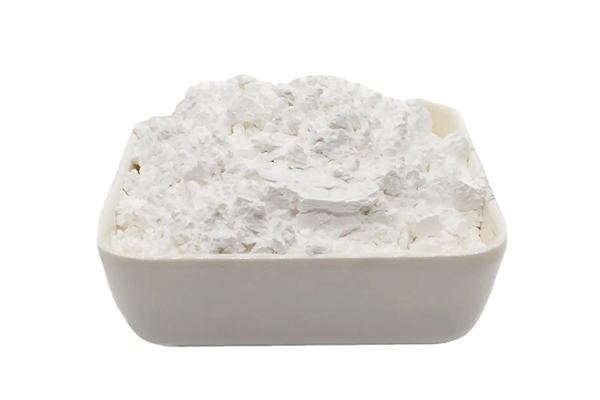Powder coating is a popular technique in industrial and manufacturing applications, offering a durable and aesthetically pleasing finish for metal surfaces, plastics, and more. Unlike liquid paint, which relies on solvents, powder coating uses finely ground particles that are electrostatically charged and bonded to a surface before being cured under heat. This creates a resilient finish that’s resistant to chipping, fading, and corrosion. When it comes to the size of powder coating powder, many factors come into play, especially in terms of application consistency and the final finish quality. Here, we’ll explore the typical micron size of powder coating powders and discuss the role of different particle sizes, including 1-micron aluminum powder, in achieving specific results.
What is Micron Size in Powder Coating?
In powder coating, “micron” refers to the particle size of the powder, with one micron equaling one-millionth of a meter (1 µm). The particle size in powder coating powder is crucial for both the application process and the final appearance of the coated surface. Generally, powder coating powders are ground into particles that typically range from 10 to 100 microns in size. This range allows the powder to flow through application equipment effectively while providing a smooth and uniform finish on the coated object.
Smaller particles within this range contribute to a finer, more consistent application, as they are more easily suspended in the air and adhere evenly to the charged surface. Larger particles, on the other hand, may provide a textured or thicker coat, which can be useful for applications that require added durability or a rougher finish.
Why Micron Size Matters in Powder Coating
The micron size of powder coating powder directly affects several aspects of the coating process:
- Application Efficiency: Particles in the ideal micron size range (10-100 µm) are more easily managed by the spray gun and other electrostatic application tools, ensuring an even application without clogging or over-spraying.
- Finish Quality: Smaller micron particles allow for smoother finishes, while larger particles create a textured look, which can be desirable for decorative or non-slip surfaces.
- Durability: Different particle sizes can impact the durability and thickness of the coating, with larger particles providing a more substantial layer of protection in harsh environments.
1-Micron Aluminum Powder: Its Use and Characteristics
1-micron aluminum powder is a very fine powder that’s commonly used for applications outside traditional powder coating. However, it’s often used as an additive or component in certain powder formulations to create specific effects, like metallic finishes. With such a fine particle size, 1-micron aluminum powder provides unique characteristics that can enhance the appearance and functionality of the coating in specific ways.
When 1-micron aluminum powder is added to powder coatings, it helps achieve a metallic, reflective finish. This ultra-fine powder is also helpful in applications that require precision and thin coatings, as it can easily fill in small imperfections or reach into crevices. The reflective qualities of aluminum powder also make it popular in coatings used for heat dissipation or electrical conductivity, such as coatings for electronic components or automotive parts.

Powder Coating vs. Fine Aluminum Powders
While 1-micron aluminum powder has specific uses in fine coatings and specialty applications, standard powder coating powders are not typically ground to this fine size. The majority of powder coating applications require a particle size that strikes a balance between ease of application and desired finish quality. Particles around 10-100 microns allow for:
- Better flow and dispersion during application.
- Controlled thickness for both aesthetic and protective functions.
- Smooth, consistent finishes without the need for excessive buildup.
Ultra-fine powders like 1-micron aluminum are harder to manage in traditional powder coating processes, as they may lead to clumping or uneven coatings. Additionally, particles this small are more susceptible to being inhaled during application, posing a health risk without proper safety equipment. For this reason, they’re often reserved for controlled environments or mixed into other powders rather than used on their own.
The Role of Micron Size in Powder Coating Applications
Micron size not only impacts the application process but also influences the final appearance and performance characteristics of a powder-coated product. For example:
- Architectural Coatings: Often rely on particles between 20-40 microns for a smooth, durable finish.
- Automotive Coatings: Use particle sizes around 30-50 microns to achieve a balance of aesthetics and resistance to chipping or scratching.
- Functional Coatings: For applications like anti-corrosion or thermal resistance, particle sizes may vary based on the required thickness and protective properties.
In some specialized applications, a blend of different particle sizes is used to achieve the best results. For example, a powder may include larger particles for thickness and durability, with smaller particles filling in gaps for a smoother appearance.
Conclusion
In powder coating, particle size plays a crucial role in achieving the desired finish and performance. Typical powder coating powders range from 10 to 100 microns, providing the ideal balance of application efficiency and finish quality. While ultra-fine powders, such as 1-micron aluminum powder, have unique uses, they are generally reserved for specialty coatings that require fine, metallic finishes or high precision in thin layers.
By understanding the micron size and its implications, manufacturers and DIYers can make informed choices when selecting powder coating materials. Whether it’s for durability, a smooth aesthetic, or a specialized metallic finish, knowing the ideal particle size ensures the coating meets both functional and visual expectations.
Post time: 11 月-07-2024




